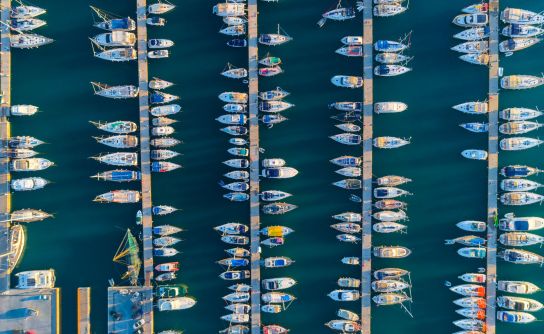13 June 2024
In the UK, one million tonnes of used textiles are generated every year. While some of these textiles can be resold, repurposed or recycled, this is often not possible for sportswear, meaning these textiles end their lives in landfill. Once in landfill, textiles lose microplastics which have since been detected across the globe, including in Antarctica.
The situation is even worse for composite materials, such as glass fibre, which are used to build water sports equipment. There are over 1.5 million composite yachts and 1 million composite dinghies globally, with about 1-2 % reaching end-of-life (EoL) annually. Recently, the fibres and resins that fragment from these EoL boats has been shown to be eaten by shellfish and cause ecosystem damage.
To address this, Sustainable Sailing Ltd, the world leaders in sail recycling, has been developing recycling solutions, specifically targeted at the water sports world, to prevent these textiles and composites reaching landfill. Their solution can even recover all the chemical building blocks of these textiles. This means these building blocks can be reassembled afterwards to make new garments.
As it scales up its recycling systems, Sustainable Sailing Ltd needs to be able to build its technologies to meet the actual needs of water sports participants in the UK. There is very little point developing the world's greatest surfboard recycling system if the bigger issue that water sports participants are facing is a shed full of broken paddles they cannot responsibly dispose of. Similarly, there are very few recycling systems which can manage neoprene, but because it is very hard wearing compared to some other fabrics, this may be less of an issue than expected, if neoprene clothing is kept in use for over 10 years.
To this end, Sustainable Sailing is launching the UK’s first nationwide, cross water sports survey to understand water sports equipment and clothing use.
It aims to explore current trends, preferences, and attitudes of UK consumers towards their water sports equipment, including the amount it gets used and what happens to it at the end of its life. Other key areas of focus include:
-
Activity participation: Understanding the types of adventure sports people favour in the UK, and the textiles and equipment used.
-
Equipment and clothing volumes: Gathering information about the quantity of sports-related textiles and equipment that consumers own.
-
Usage patterns: Assessing current processes for end-of-life textiles and how these could be improved.
-
Green attitudes: Exploring consumer attitudes towards recycling old or worn-out sports clothing and their willingness to adopt recycled products.
Dr Joe Penhaul-Smith, founding director of Sustainable Sailing said: “Our clothing and equipment is designed to be hard wearing and resistant to all the abuse of high-performance sports, but this has come at the cost of being difficult to manage at the end of use. This survey will allow us to understand the needs of our consumers, allowing us to innovate and offer environmentally responsible products and services. We encourage all UK residents who participate in adventure sports to take part in our survey and share their valuable insight.”
To participate in our survey, please visit https://www.surveymonkey.com/r/JZQLPPR or our website at https://www.sustainablesailing.co.uk/. If you are interested in partnering with Sustainable Sailing, please contact us at: info@sustainablesailing.co.uk
Jordan Girling, ‘Textiles Extended Producer Responsibility (EPR)’.
Cole et al., ‘Microplastics as Contaminants in the Marine Environment’.
Ciocan et al., ‘Glass Reinforced Plastic (GRP) Boats and the Impact on Coastal Environment – Evidence of Fibreglass Ingestion by Marine Bivalves from Natural Populations’.

